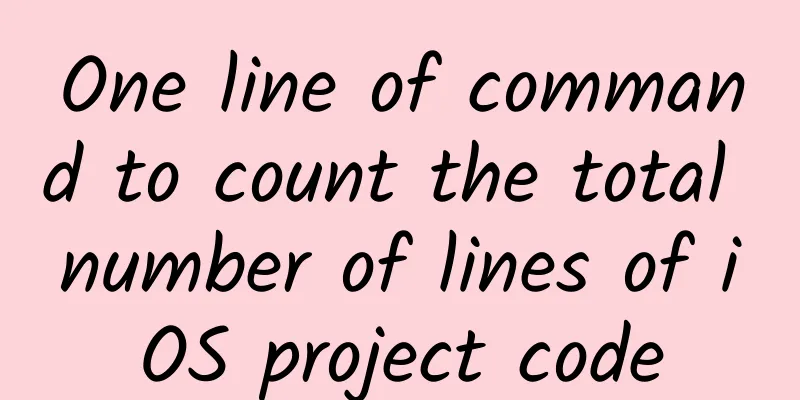The so-called capital winter is nothing but the collapse of wishful thinking

|
Last year, we mentioned that winter is coming. This year, the capital market is in a state of cold. Recently, various self-media, investment institutions, and some offline sharing sessions have also been talking about the capital winter. But, having said that, when we talk about the capital winter, if you look closely at the market conditions, you will find an astonishing fact. The overall development of the Internet is actually not bad. Look at Tencent's financial report to see if its market value has reached a new high. Is Alibaba's financial report impressive enough? NetEase, Weibo, and even Momo, many giants, quasi-giants, and listed companies are setting new highs or rebounding strongly. Among the giants, only Baidu is not doing well, which is another topic. Simply put, the truth about the Internet today is that the strong are getting stronger, the trend of oligopoly is becoming more obvious, and the market space for startups is becoming increasingly cramped. Let's use the game industry that I am familiar with as an example. At the beginning of the mobile game era, thousands of studios were competing vigorously for the market. Now, Tencent and NetEase control 70%-80%. A bunch of old PC game players and other listed game companies have divided up the vast majority of the rest. How much share is left for startups? Is there 5%? I don't think there is even 5%. The market is growing, but the window of opportunity for entrepreneurs is very narrow. So, looking back, the so-called capital winter is not the winter of the entire industry, but the winter of entrepreneurs and emerging companies, which is different from the winter we talked about before. So, a new question arises, why are the opportunities for startups getting smaller and smaller? I have sorted out my understanding that too many entrepreneurial opportunities are the wishful thinking of entrepreneurs and investors, and the core of this wishful thinking is to ignore or underestimate the cost of traffic. In a specific period, during the traffic dividend period, there are indeed successful cases, but when the traffic dividend is broken, the traffic advantage of the giants is highlighted, and the startups are quickly dragged down by the traffic cost and cannot recover. The ability to obtain traffic is still the most core and most emphasized ability of startups now, but many companies in so-called new fields ignore this point, or even despise it. This was the core point I made at the opening of a private sharing session in Singapore a few days ago, and I would like to extend it today. Lei Jun said that if you stand at the wind's outlet, even pigs can fly. What is the wind's outlet? In my opinion, it is the period of traffic dividend. What is traffic dividend? 1. The number of new platform users is growing rapidly, but related resources are scarce. Whoever seizes the opportunity will fully enjoy the traffic dividend In the early days of PC Internet, why did heroes emerge from the grassroots and grassroots webmasters emerge in large numbers? At first, it was because Internet resources were scarce, but the number of Internet users continued to increase rapidly. As long as you can provide high-quality and stable content, the traffic dividend period will last for a long time. When the mobile Internet first emerged, the first batch of mobile game developers took advantage of the rapid growth of user traffic dividends. However, the mobile Internet spread too quickly, and the giants followed up too quickly, so the traffic dividend period was very short. When the WeChat public platform first came into being, self-media also took advantage of the traffic dividend. 2. When the advertising value of new media and user platforms has not yet been tapped, the first movers will gain traffic dividends When Taobao was first launched, the number of e-commerce users surged, and Taobao itself began to spend a lot of money on promotion. At that time, opening a Taobao store would bring traffic bonuses, because you could acquire the user base promoted by Taobao at a very low cost; but today, the cost of acquiring users on Taobao is already extremely high, and it is no longer possible to take advantage of this. Those who were the first to do Baidu bidding and the first to buy Guangdiantong all had traffic dividends, but if they were late, they lost it. New advertising carriers, or old advertising carriers, are often underestimated or have information asymmetry in the new environment. Whoever has this information will have the traffic dividend. 3. When new topics and new industries emerge, the traffic dividend caused by spontaneous media dissemination A typical example is Xiaomi. Why was Xiaomi successful back then? Because its topic effect was too strong and its spontaneous spread was too strong. This is what the so-called trend lies in. So many Internet brands want to learn from Xiaomi, but they fail to achieve topicality and spreadability, so the user cognition cost and trust cost increase. Some innovative fields, or cross-border fields, some new concepts, new models, and new operating methods will generate a certain degree of topic popularity. Under this popularity, the media and various social networks will spread spontaneously, bringing traffic dividends. 4. New promotion channels and new publicity methods, when users are not yet immune, the low-cost publicity advantages obtained can also be considered a traffic bonus A typical example in China is single-page e-commerce, which I will not elaborate on. I will only state the conclusion that it used to be very profitable (I didn’t even dare to mention it at the time), but users’ immunity is getting stronger and stronger, and it is not as easy to make money now as before. It was the same in the early days of WeChat business. Users had low immunity and poor resistance, so it was easy for them to develop a buying enthusiasm, and now the screen is full of it. I'll just mention one example of the notorious induced and fraudulent installation abroad, which bullies foreigners for being ignorant. Some Chinese Internet giants do this (of course, the decision makers may not really know), and the installation cost is as low as a few cents. This is also a kind of traffic dividend. Behind the brilliant performance of Chinese companies going overseas, there are some things that are really not clean. Let’s talk about traffic cost and explain some relevant cases. To put it simply, traffic cost is the cost of acquiring users. It sounds simple, but why is it always underestimated by entrepreneurs? Many successful companies have taken advantage of the traffic dividend period to grow and develop, but the founders did not realize this. They just thought it was due to their company's hard work and excellent products. When the dividend period is gone and development is sluggish, they complain about everything, but always intentionally or unintentionally ignore reflection in this aspect. I saw some articles at the end of last year and the beginning of this year saying that the era of traffic being king is over and now is the era of something or other. They take traffic dividends for granted and take users' spontaneous dissemination for granted. This is what we often call wishful thinking. The following is an extension: 1. Product from the perspective of traffic cost A good product has two goals. The first is low traffic acquisition cost, which means it is easy to spread. The second is high traffic conversion revenue, which means it can withstand any high traffic acquisition cost. A few days ago, someone from Facebook mentioned the case again. How much did it cost for a well-known heavy game to acquire high-quality users in North America on Facebook? The price was $100 per user to install. This is a case with high traffic conversion benefits. Of course, this is also the case that Facebook is most happy to see. If their users can all be sold at high prices, then the stock will double. But we can't learn it. Such products are what we often call pit-digging games, which deeply tap the consumption potential of big spenders; The corresponding extreme case is Pokemon, a global hit. How many ads did it put on Facebook? Guess? 0! This is the power of strong IP and good products. The cost of traffic acquisition is shockingly low. If we talk about good products, these are the two extremes:
Some time ago in Guangzhou, an investor of a startup team showed me a video produced by his team. He said that he had found many test users to collect feedback for this video, and the favorable rate reached 97%, which he thought was very valuable. I was embarrassed to say it directly to his face, so I told a partner of his side privately that this evaluation method was wrong. Although their videos had high favorable ratings, the content design lacked consideration for dissemination, and it was difficult for users to actively spread them. Its value was very limited. To put it more directly, some more controversial videos may be more likely to spread. When I mentioned the game series before, I actually talked about both sides. How do games make money? Let’s talk about digging holes, that is, taking the path of deep R, fighting against the high traffic acquisition cost of current channels, deep data mining, which has been trampled by many peers. How do games make money? Returning to the fun of the game, that is, going for spontaneous user dissemination, which can reduce the cost of traffic acquisition, but it is actually very difficult to do well, and requires a deep understanding of the players. I think I am far from it. 2. The boundary between tradition and the Internet When the Internet was rising, I always said that there were two enduring statements that deceived many people. The first was that the Internet saved the costs of channels and marketing; the second was that the Internet solved information asymmetry. However, it is not. Today I will only talk about the first one. As I said just now, in the beginning, when you open a store on Taobao, you can indeed enjoy some traffic dividends. As long as you make some good products seriously, you can get free users. But now, to put it bluntly, if you look at Taobao’s financial report, you will understand that there is no such thing as a free lunch. Now, by comparing Taobao's transaction volume with its financial report, you can roughly estimate what proportion of the total transaction volume the traffic acquisition cost accounts for (actually not just that, because many Taobao stores also buy portal advertisements from Baidu, Guangdiantong, Sina and Tencent, or advertisements from other platforms to divert traffic). Then, if you look at the data in the traditional retail sector, you will find that the traffic acquisition cost of the Internet and the traffic acquisition cost in the traditional field are actually on the same line. When opening a traditional store, the most important thing is the location. Why is the location the most important? Because there is traffic. The so-called land rent, if you look at it, actually corresponds to the scale of traffic you can get in this place. If you want to get more, there are ways to do it, such as hanging signs at intersections, sending some sales staff to hand out flyers, or parading around with store billboards. These, if you calculate, are actually the cost of acquiring traffic. Then calculate the traffic you can bring, how much money you will spend on average for each potential buyer, or average buyer, and whether you can make back your sales gross profit. Now, the cost of acquiring users on the Internet is cheaper than that of traditional stores, or even the most popular stores in second-tier and third-tier cities. Do you really think that the Internet is cheaper? Do the math yourself. It is no longer the case. There is a good question on Zhihu: vivo and OPPO, why do they sell so well with such low price-performance ratio? There is an answer that I think is pretty good. First of all, of course these two products are not bad. Many so-called low configurations are just a prejudice of IT professionals. But more importantly, people have calculated the marketing costs of offline channels, and they are not much more expensive than online channels. In fact, many online brands or Internet brands, except Xiaomi and Hammer, which can be said to have benefited from traffic dividends, basically have to spend a lot of money on marketing, and the cost is not low. Then I can add a little answer here. It is precisely because vivo and OPPO have profit margins that they can support sufficient traffic acquisition costs. Although it is offline marketing, there is actually no difference in essence. Think about the answer, isn't it? Products that push prices and profit margins to the extreme are hard to attract users, especially in offline channels. Why would users know you and trust you if you sell cheaply? Online, only products with huge profits can afford Baidu’s paid ranking, and offline, only products with profit support can afford channel promotion. When the online unit user acquisition cost begins to exceed the offline cost, the Internet is no longer the only or necessary choice. 3. Wishful thinking of scale effect The beautiful vision of many entrepreneurial projects is that if they burn money, provide various subsidies and promotions, achieve economies of scale, form user dependence, and cancel subsidies and promotions, they will make money. There are several problems here: First, is this your business? If you are the only one in the market, there is nothing to say. But if there are many competitors in the market, do you really think that you can win just because you have more money? Today we say that Meituan is the last one standing in the group buying industry. Of course, Meituan is not profitable as a whole until today, but let’s not talk about that for now. Looking back, was Meituan the richest back then? Of course not. How did Lashou.com, the market leader, die? To put it bluntly, you can still use all means to control your traffic acquisition costs. What you are competing for is who can gain more users’ trust with limited resources. There are also successful cases of scale effect, such as Didi, which finally survived, but you can also see the corpses everywhere outside Didi. Why did Didi survive? In order to open up mobile payment, the giants backed it from behind, and when the battle was fierce, the funds could withstand it. In terms of burning money, investors really can't compare with the giants. Later on, Meituan, Dianping, and Nuomi, all of which survived, had to rely on the giants for blood transfusions. Investors could no longer afford it. In addition to money, traffic resources are also a very important part of the blood transfusions provided by the giants. Nuomi is a typical example. If Baidu did not provide traffic, it would basically die. Therefore, if you want to achieve economies of scale, while having a lot of money is important, the cost of acquiring traffic is still the core competitiveness. Second, is this user really your user? Many users use your products and enjoy your discounts because of your subsidies and various offers. But once you start charging normal fees and want to make some profit, they will abandon you without hesitation. Therefore, if users cannot maintain and develop continuous dependence, some data indicators will only look good on paper. Many startups spend a lot of money to buy users and traffic. In order to save costs, they buy all kinds of junk traffic to increase the number of users, but there is no retention and no dependence. They just cheat one round of investment after another. Now investors have also been educated and know that many data are too fake to be read. Once it comes to traffic monetization, all the true colors are exposed. There is also the O2O service industry, and running away from orders is basically an unavoidable problem. As an intermediary platform, you have to figure out where your value lies. Third, how to calculate marginal cost? The marginal cost of some things will decrease after the scale is achieved, but not others. For example, the marginal cost of home chefs, home car washes, home tutoring, and home massages cannot be reduced at all. There are even some that are very bad resource waste overall, such as cooking at home. An excellent chef cooking at home is a huge waste of resources. This kind of thing on a large scale is a very bad expense for the overall social cost. 4. The core of the new concept Fan economy, internet celebrity economy, the so-called monetization of influence, to put it bluntly, is still the ability to acquire traffic. This has been mentioned before. The first is to gain user recognition, and the second is to gain user trust. Let me say something additional about Baidu's problem. In the past few years, under the pressure of financial reports, Baidu's ability to monetize traffic was severely overdrawn, which led to a decline in the credit of traffic. This is Baidu's biggest dilemma in the future. When we talk about the value of traffic, in addition to gaining user recognition, another point is to gain user trust. The same goes for self-media and new media. Following the user's browsing habits, it is still a question of traffic acquisition ability. The so-called IP is king, and all kinds of emotions and stories are turned around, because this thing can reduce the cost of acquiring traffic. To put it bluntly, it’s still a routine. A few years ago, I told many of my friends that apus was amazing and great, the hao123 of the mobile era. However, many people disagreed and thought that the concept of traffic entrance no longer existed in the mobile era. Today, we see that in the so-called capital winter, apus not only had its valuation increased, but also became profitable quickly. 5. Who can not rely on traffic This has been mentioned before, let me reiterate: First, you have unique resources, and they are scarce unique resources, such as 12306, which is exclusively operated. This is acceptable. Second, you have unique technology. For example, a good friend of mine founded a company whose performance was not very good, its sales ability was average, and its marketing ability was almost zero, but its core technology was strong. Even if it did not make money, it was still acquired by a giant. Forget about the unique model or anything like that. There is no threshold for things that are highly replicable, and there are too many smart people in China. I want to emphasize again that what we are talking about today are actually old things, but I think there are still very few entrepreneurs who are truly aware of this. The so-called capital winter is the story of a group of startups that tried to grab a wave of traffic dividends in new concepts and new fields, but were dragged down by the high cost of traffic acquisition because the traffic dividends quickly burst and they themselves lacked competitiveness in traffic acquisition. The so-called concept, the so-called sentiment, the so-called storytelling can actually be understood as a way to try to reduce traffic costs. As users become more immune, the effectiveness of some new marketing methods and promotion methods has plummeted, and the value of various jokesters and marketing experts has passed its peak. Therefore, it is becoming increasingly difficult to try to replicate the success stories of the traffic bonus period. Finally, let me tell you one more truth. As far as I know, entrepreneurs who have the ability to acquire traffic are currently living a pretty comfortable life. Maybe their lives are not glamorous enough, but they are basically making money all the time. What kind of talents are in great demand now? People who can do Facebook delivery optimization and ASO optimization. As a winner of Toutiao's Qingyun Plan and Baijiahao's Bai+ Plan, the 2019 Baidu Digital Author of the Year, the Baijiahao's Most Popular Author in the Technology Field, the 2019 Sogou Technology and Culture Author, and the 2021 Baijiahao Quarterly Influential Creator, he has won many awards, including the 2013 Sohu Best Industry Media Person, the 2015 China New Media Entrepreneurship Competition Beijing Third Place, the 2015 Guangmang Experience Award, the 2015 China New Media Entrepreneurship Competition Finals Third Place, and the 2018 Baidu Dynamic Annual Powerful Celebrity. |
<<: How did the once-loved unicorns fall from grace?
>>: Will artificial intelligence be the terminator of the fierce competition in cloud computing?
Recommend
Are you afraid of arsenic? How to treat the heavy metal arsenic we come into contact with in our daily life
Most people's impression of arsenic is probab...
Bosch may pay $300 million in compensation for involvement in Volkswagen cheating scandal: insider
German auto parts supplier Bosch was previously s...
Brand Matrix Building Guide
This article will talk about "How to build I...
Three tricks of social marketing, let you break away from the traditional sales model and quickly fission to detonate performance Baidu Cloud download
Three tricks of social marketing, let you break a...
Eyes are afraid of blue light. What is blue light? Can it really be prevented?
The eyes are a very important sensory organ and t...
Will the mobile phone market see a turnaround in 2019?
2018 is already last year. The winter was too col...
Apple releases iOS16 Beta 2! Let's take a look at what's updated
Apple recently pushed the iOS/iPadOS 16 Developer...
Long picture丨Returning from space, counting the moments of astronauts landing and leaving the spacecraft in the past 20 years
Produced by: Xinhua News Agency PLA Branch Produc...
Can the eye axis be shortened? Can myopia be reversed? They are all true! But...
As parents pay more and more attention to their c...
The new generation of Google Glass actually takes pictures like this
According to a Google patent document, Google Gla...
Tesla Optimus, orthopedic expert, silver-haired partner... This robot conference is full of useful information! Take a sneak peek!
On the morning of August 21, 2024 World Robot Con...
9 major processes of Tik Tok live streaming, a must-have operating guide for beginners!
In our previous articles, we have shared many met...
Yunfu SEO Training: What are the ranking techniques for SEO promotion keywords?
In the current SEO summary of many websites, many...
Analysis of the hot search traffic of public accounts
In recent months, the gameplay based on WeChat se...
Is colored rice more nutritious?
Many plants in nature are colorful, including fru...









